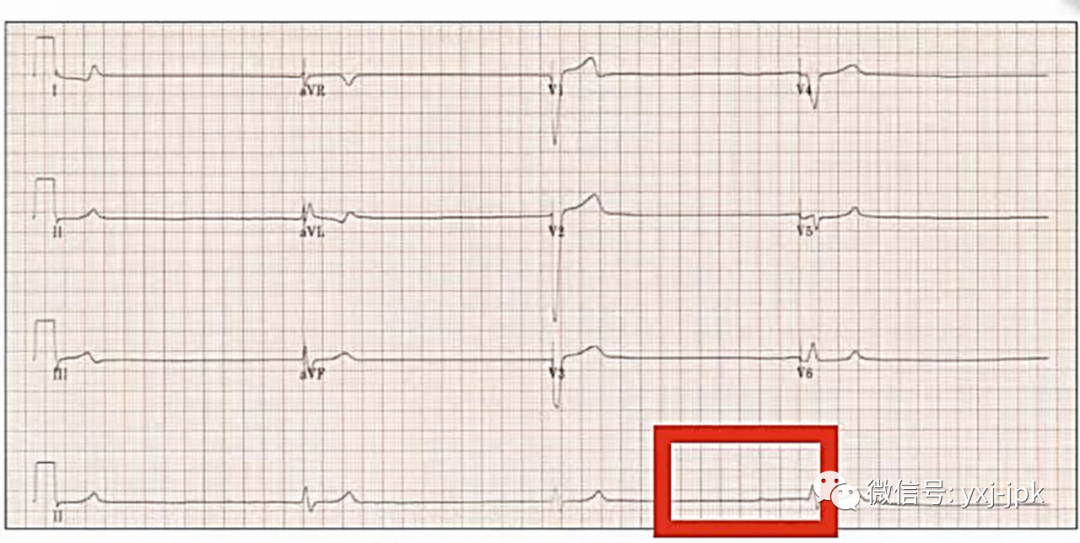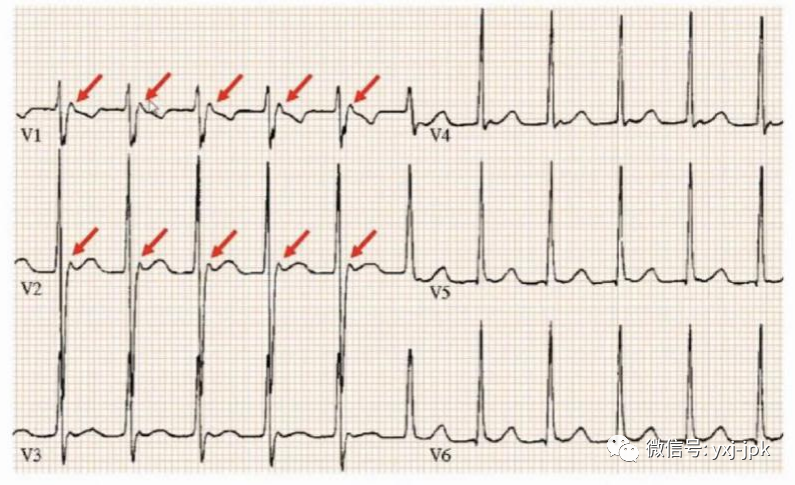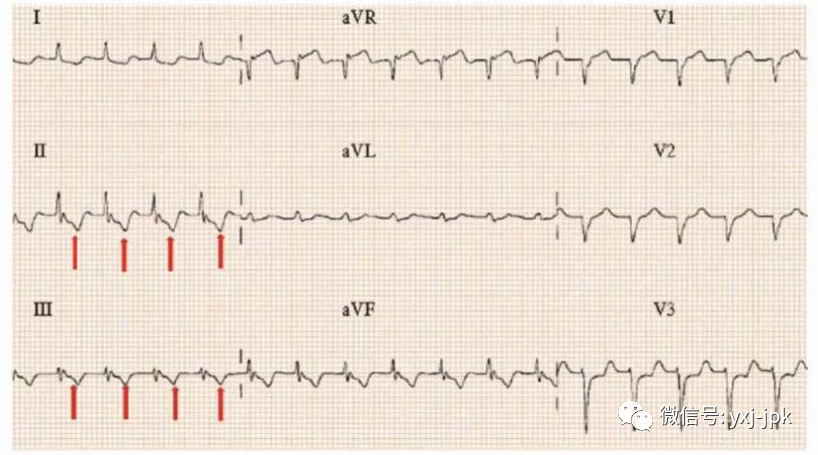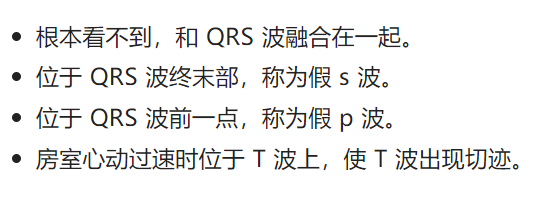The P wave is gone, what disease does the corresponding disease?Expert interpretation comes
Author:Cardiovascular Channel in the Time:2022.09.12
*For medical professionals for reading reference

Class Notes--
"Dr. Liu Xingpeng ECG Time 2.0: Theory"
Lecturer: Liu Xingpeng
Beijing Chaoyang Hospital affiliated to Capital Medical University
ECG is an important tool for judging diseases in the cardiac doctor, but many doctors have not eaten the electrocardiogram.
The reason is that we only care about looking at the doctor in the daily diagnosis and treatment process, and we do not summarize the knowledge learned from the case. However, it doesn't matter, the small world sorted out and summarized the relevant courses of ECG. From the principle to the analysis of ideas, take you to understand the electrocardiogram.
Today, let's look at the P -wave first, and look at the first P wave in the electrocardiogram of the ECG.
Xiaobei carefully prepared knowledge notes for everyone, you can use the courses ~

Two sentences summarize the characteristics of P wave disappearance
The P -wave reflects the atrium in the atrium mediated by the sinus. If there is no P wave, it is likely that the excitement is likely to have abnormalities at this time. So what is the disappearance of P waves? Generally speaking, there are two situations.
In order to facilitate memory, you can use the following two poems:
The first one we call it "helplessly". In this case, the P wave completely disappeared and it really disappeared.
In another case, we call it "uninterrupted into the flowers". At this time, the P wave is only hidden, and it may be hidden in QRS waves or P waves.
Let's first take a look at what is really disappearing in P waves:
1. The sinus knot does not have a job, and there is no different excitement point, so the P wave is completely gone.
2. The sinus room is assigned, but "sinus block blockage" appears during the process of conduction of sinus houses to the atrium, and the signal cannot be passed down.
3. The sinus room is associated with work, and at the same time, it can be passed on, and there is no sinus block block. However, the atrial muscles have severe abnormalities, so the P wave cannot be seen.
The cause of the first P wave disappears: sinus stop fighting
The most common cause of sinus knots is the most common cause of sinus stops. As shown in ECG (Figure 1), we can see some alien heart rhythm. The QRS wave is relatively wide, showing the left beam -branch blocking form. When looking for P waves in the R-R period, except for the place where the circles may be P waves, other positions cannot be seen.
This shows that the patient is indeed in a state of sinus, and the sinus knot is completely unpurate. Patients with pathogenic sinus syndrome are prone to such ECG performance.

Figure 1 The label of suspicious P waves
The reason why the second P wave disappears: sinus voltage block
Let's take a look at the second, sinus block block. At this time, it can be divided into two types:
The first is the second -degree type I sinus block, which is the phenomenon of Wen's. In this case, the PP interval gradually shortens, which is manifested as the heart rate gradually accelerates until a long interval occurs, no P wave appears, and the PP time interval before the long PP time is 2 times.
The following figure is an example. The two times time interval is 740ms + 700ms = 1440ms, while the length interval is 1300ms, 1300ms <1440ms.

Figure 2 Wen's phenomenon
The second is the second -degree II sinus block. In this case, the PP interval is constant until a long interval between a long interval, the long PP time = 2 times the PP time interval before the interval.
The following figure is an example, 720ms+720ms = 1440ms.

Figure 3 Two -degree II sinus block
When it comes to sinus house blocking, we must note that in the three types of sinus house blocking, once the sinus conduction block is blocked on the ECG, there is no abnormal manifestation. Only the second -degree sinus block can be reflected on the electrocardiogram. The reason is that we have no way to see the ECG curve directly on the ECG.
Skills of judging p 'waves
In the figure below, we can see that the part marked by the red arrow behind the QRS wave on the QRS wave on the V1 has an unusual overlapping waveform, but it cannot determine its nature. Essence In this case, you can look back at lead V5. If it is considered that the R'c' wave appears on the lead of V1, there will be S waves in the V5 leader, and no S waves are seen, indicating that this is a P 'wave instead of R' wave at this time.

Figure 6 p'wave judgment application
After the AVNRT QRS waves, the P 'wave can be seen after the P' wave on the V1-V2 lead may be mistaken for the R 'wave.
Let's take a look at the situation of AVRT. When AVRT, P 'Booro overlapped on the T wave and made it pointed. The front of the T wave is slow, and the back support is steep. If the T wave is shown in the figure below and the sharp corner appears, it means that the T wave blends a P 'wave here.

Figure 7 sharp corner T wave
This tip of the small world can help us quickly discover the hidden P 'wave in the T wave.
Summary: The hidden P 'wave may have the following four situations:

- END -
Ride 20 kilometers a day, he does "beauty" one by one for the bus station

At 7:30 on July 18th, Hankou Changqing Road Changqing Park Bus Station, 39 -year -...
Entering Chongqing Railway Station on October 31 must hold a 48 -hour kernel acid negative certificate

In the waiting room of Chongqing North Railway Station. Photo by Correspondent Wei...